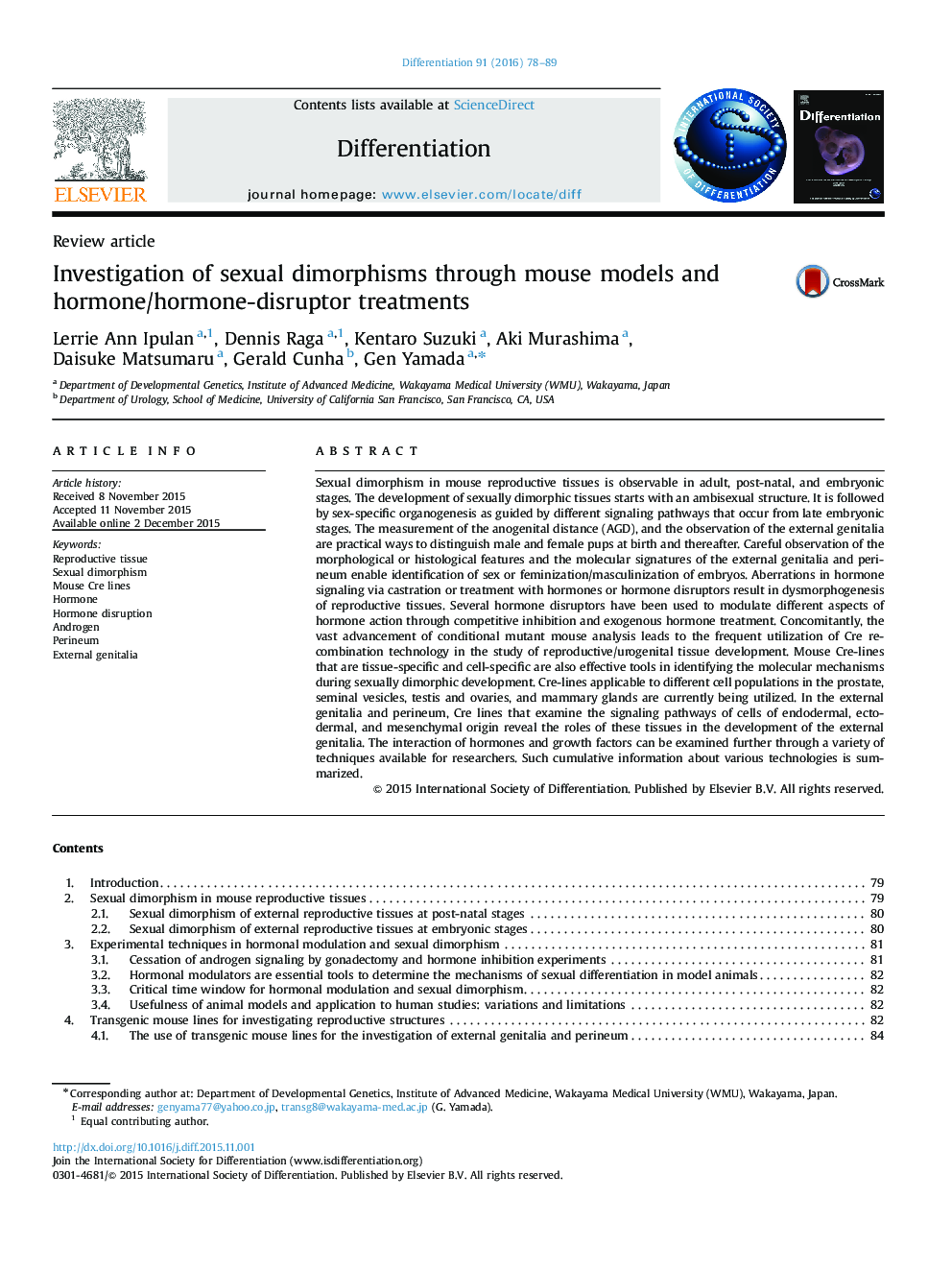| کد مقاله | کد نشریه | سال انتشار | مقاله انگلیسی | نسخه تمام متن |
|---|---|---|---|---|
| 2119284 | 1546788 | 2016 | 12 صفحه PDF | دانلود رایگان |
• Classification of important timepoints for the development of reproductive tissues.
• Sexual dimorphisms for embryonic and post-natal stages used for sexing.
• Treatment of hormone/hormone-disruptors and its effects on reproductive tissues.
• Mouse Cre lines used for various cell populations and diverse reproductive tissues.
• Mouse Cre lines regulating endodermal, ectodermal, and mesenchymal signalings in GT.
Sexual dimorphism in mouse reproductive tissues is observable in adult, post-natal, and embryonic stages. The development of sexually dimorphic tissues starts with an ambisexual structure. It is followed by sex-specific organogenesis as guided by different signaling pathways that occur from late embryonic stages. The measurement of the anogenital distance (AGD), and the observation of the external genitalia are practical ways to distinguish male and female pups at birth and thereafter. Careful observation of the morphological or histological features and the molecular signatures of the external genitalia and perineum enable identification of sex or feminization/masculinization of embryos. Aberrations in hormone signaling via castration or treatment with hormones or hormone disruptors result in dysmorphogenesis of reproductive tissues. Several hormone disruptors have been used to modulate different aspects of hormone action through competitive inhibition and exogenous hormone treatment. Concomitantly, the vast advancement of conditional mutant mouse analysis leads to the frequent utilization of Cre recombination technology in the study of reproductive/urogenital tissue development. Mouse Cre-lines that are tissue-specific and cell-specific are also effective tools in identifying the molecular mechanisms during sexually dimorphic development. Cre-lines applicable to different cell populations in the prostate, seminal vesicles, testis and ovaries, and mammary glands are currently being utilized. In the external genitalia and perineum, Cre lines that examine the signaling pathways of cells of endodermal, ectodermal, and mesenchymal origin reveal the roles of these tissues in the development of the external genitalia. The interaction of hormones and growth factors can be examined further through a variety of techniques available for researchers. Such cumulative information about various technologies is summarized.
Journal: Differentiation - Volume 91, Issues 4–5, April–June 2016, Pages 78–89
